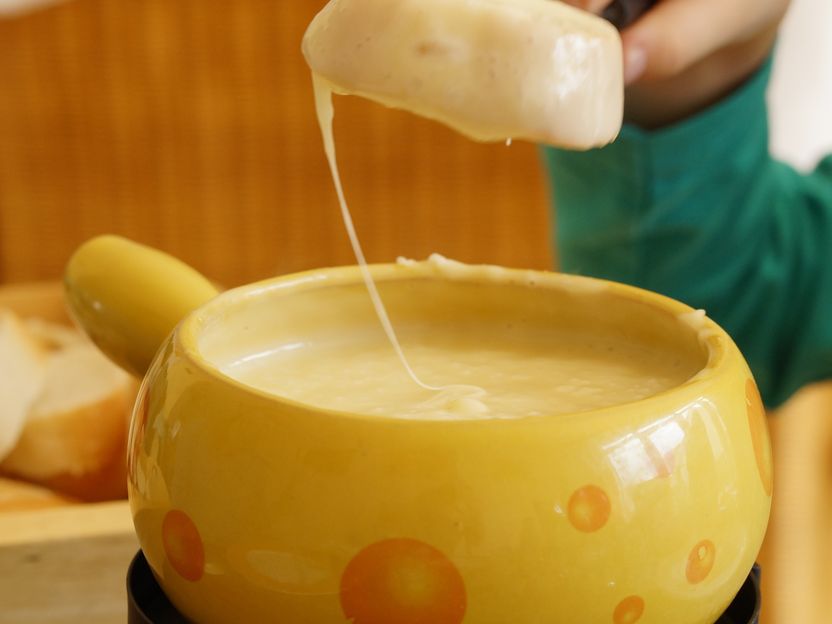A scientific method for perfect fondue
cheese fondue is an icon of Swiss cuisine and a dinner party staple. While it may seem like a simple dish, getting the texture right can be a challenge for optimal mouthfeel, dipping and flavor release. This requires the perfect balance of cheese, wine and starch. Now, researchers reporting in ACS Omega reveal how to use these key ingredients to produce deliciously melted fondue.

pixabay/Efraimstochter
Once a fad of the 1970s, fondue has made a resurgence in recent years. And on a cold winter night, there's nothing better than dipping a piece of bread into warm, gooey cheese. But that's only part of the picture. Traditional versions also include wine and seasonings, as well as starch for cohesion. Chemically speaking, fondue is a multiphase system of colloids that require just the right inputs to achieve cheesy perfection. One wrong move could leave the preparer with an unappetizing bowl of separated cheese solids and oils. So, to gain further insight into the flow of fondue, Pascal Bertsch, Laura Savorani and Peter Fischer wanted to assess the effect of starch and wine on the dish.
The researchers started with equal amounts of two traditional fondue cheeses -- Gruyère and Vacherin -- in water. The addition of a potato starch slurry prevented irreversible separation of the dish. To mimic the effects of wine, they added a mixture of water and ethanol. This decreased the viscosity of the fondue, which is required for optimal mouthfeel and dipping coverage. They also incorporated acid to study the effect of lowering the pH, and this generally had the effect of lowering the fondue's viscosity. The researchers also explored alternative thickening agents. Less carrageenan and xanthan gum were required compared to the amount of potato starch needed, but it was carrageenan that provided the creamiest results. Overall, the study shows that a few minor tweaks can result in cheesy perfection every time the fondue pot is brought out.
Most read news
Other news from the department science

Get the food & beverage industry in your inbox
By submitting this form you agree that LUMITOS AG will send you the newsletter(s) selected above by email. Your data will not be passed on to third parties. Your data will be stored and processed in accordance with our data protection regulations. LUMITOS may contact you by email for the purpose of advertising or market and opinion surveys. You can revoke your consent at any time without giving reasons to LUMITOS AG, Ernst-Augustin-Str. 2, 12489 Berlin, Germany or by e-mail at revoke@lumitos.com with effect for the future. In addition, each email contains a link to unsubscribe from the corresponding newsletter.



























































